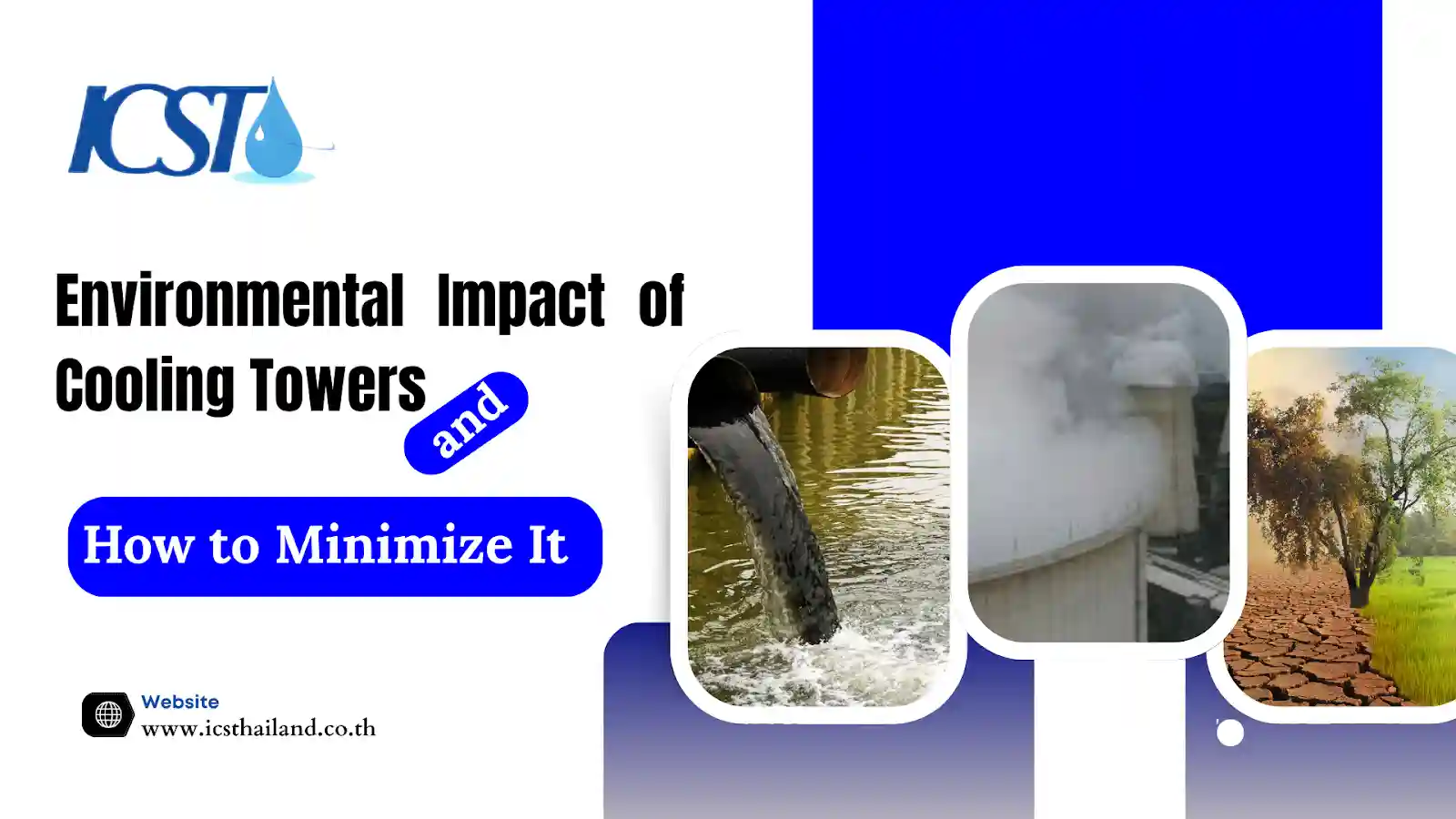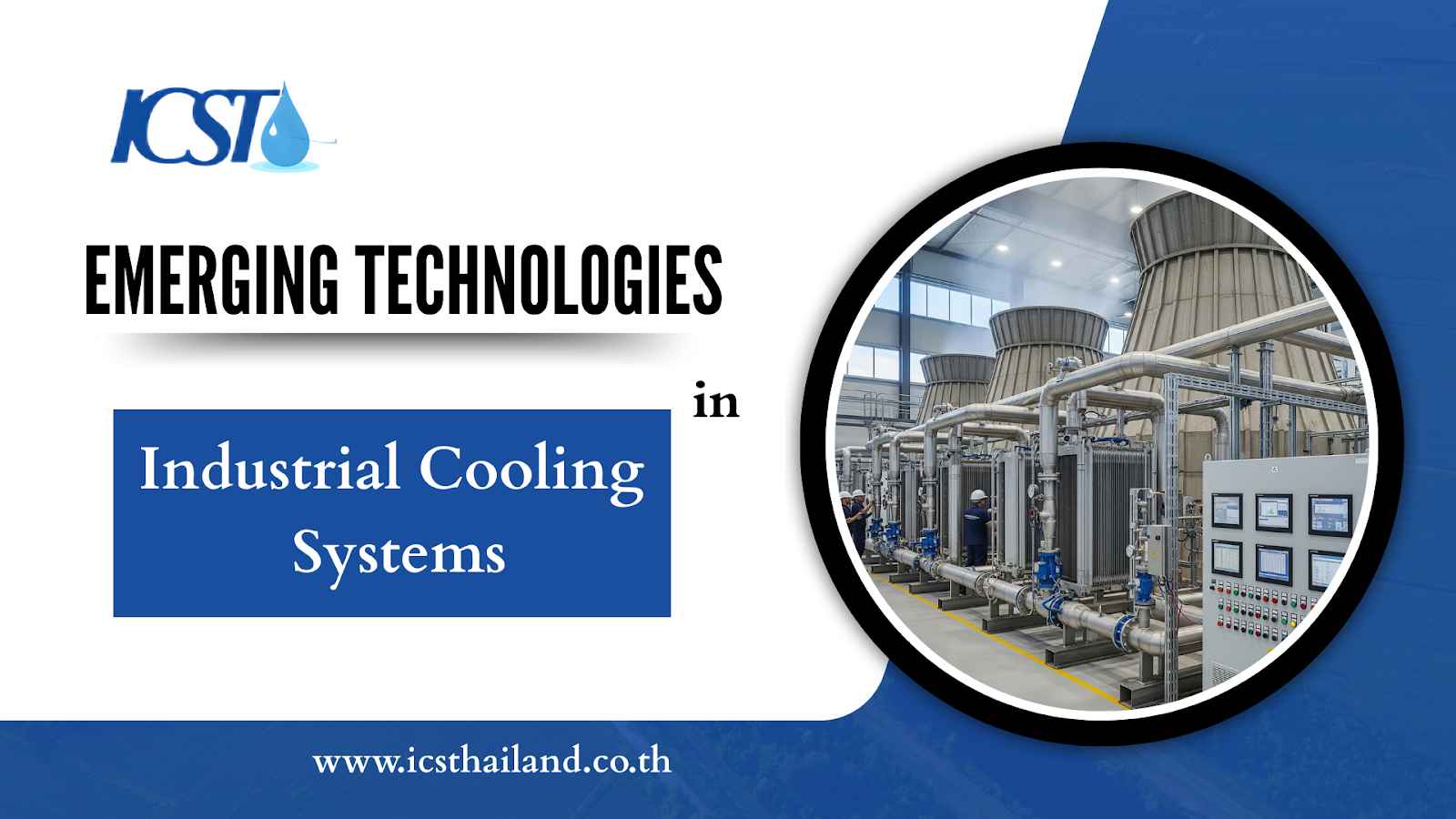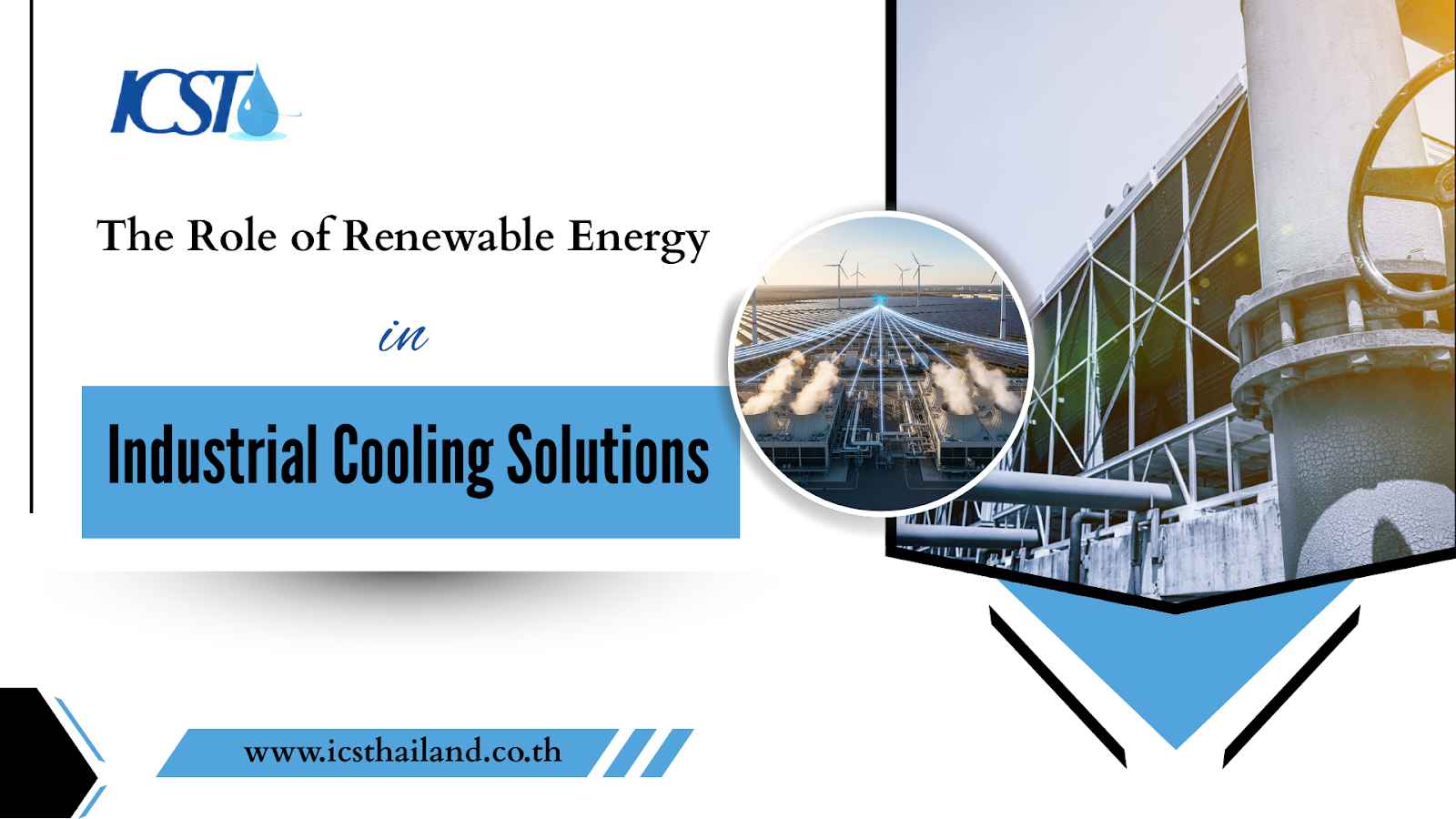Cooling towers are essential yet often overlooked systems that play a critical role in the industrial and energy sectors. They help regulate thermal efficiency by dissipating excess heat in industries like power generation, HVAC systems, and manufacturing.
But have you ever stopped to consider what the true environmental cost of this continuous, vital cooling might be? My mind used to jump straight to the visible plumes of water vapor rising into the sky. Yet, as I’ve dug deeper, I’ve realized their environmental footprint extends far beyond simple evaporation. There are often-overlooked environmental impacts that deserve our full attention.
In this blog post, I want to take you on a journey to uncover these multi-faceted impacts of cooling towers. More importantly, I’ll share a comprehensive roadmap of viable, actionable solutions.
Table of Contents
ToggleThe Multi-Faceted Environmental Impacts of Cooling Towers
When we talk about cooling towers, our minds often jump to energy consumption or the occasional plume. I’ve found that truly understanding these “hidden” costs is the first step toward effective mitigation.
Water Consumption and Scarcity
One major concern is water loss, which occurs primarily through evaporation, drift, and blowdown. Did you know that for every 10°F of cooling, evaporation usually uses up about 1-2% of the circulating flow? Think about that for a moment for a large industrial facility running 24/7 – we’re talking millions of gallons annually. When you consider the scale of industrial use, this translates into millions of gallons lost annually, further straining global freshwater supplies.
In an era of increasing global water scarcity and localized water stress, this consumption places immense pressure on freshwater sources. It can deplete local aquifers, reduce river flows, and negatively impact aquatic ecosystems if the water is sourced from natural bodies. Are we really aware of how much water literally goes up in smoke?
Chemical Discharge and Water Pollution
When water is discharged from cooling towers (referred to as blowdown), it carries concentrated levels of chemicals such as corrosion inhibitors, biocides, and heavy metals. This treatment involves a cocktail of chemicals. Blowdown water contains concentrated minerals, scale/corrosion inhibitors, biocides (e.g., chlorine, bromine, phosphonates, polymers), and other contaminants.
Improperly treated discharge can contaminate local water bodies, potentially leading to eutrophication and toxic effects on aquatic life.
When discharged directly into surface waters or municipal wastewater systems without adequate treatment, these chemicals and contaminants can cause significant water pollution. They contribute to:
- Eutrophication: Excess nutrients leading to harmful algal blooms.
- Toxicity to aquatic life: Direct harm to fish and other organisms.
Adherence to strict wastewater regulations like the Clean Water Act is necessary but not always sufficient. What more can be done here? We’ll discuss that soon.
Energy Consumption and Carbon Emissions
Cooling towers rely on fans and pumps to keep things running, but inefficient energy usage leads to higher greenhouse gas emissions. The large fans that move air through the tower and the pumps that circulate water through the system require substantial electricity. Inefficient operations, such as fouled heat exchange surfaces or improperly maintained fans, lead to even higher energy demand.
Increased electricity consumption directly translates to higher greenhouse gas emissions from power generation (unless your facility runs entirely on renewable energy). This contributes significantly to climate change.
Air Quality and Plume Visual Impact
They often seem harmless but they can cause localized issues like fogging, reduced visibility on nearby roads, and in colder climates, even icing. These droplets can carry treatment chemicals, dissolved solids, and dangerous microbes, most notably Legionella pneumophila, the bacteria responsible for Legionnaires’ disease.
Beyond aesthetic concerns in urban or residential areas, plume impact can pose safety hazards. Drift poses a direct health risk if the water contains pathogens, and can also lead to deposition of chemicals on surrounding property.
Strategies for Minimizing Environmental Impact: A Roadmap to Sustainability
So, are we doomed to accept these impacts as the unavoidable cost of modern cooling? Absolutely not! The good news is that numerous strategies and innovative technologies exist to significantly reduce the environmental footprint of cooling towers. I’ve seen firsthand how these solutions can transform operations, offering both environmental and economic benefits. This is our roadmap to sustainability.
1. Reduce, Reuse, Recycle
One of the most well-known strategies for minimizing environmental impact is the “three R’s” – reduce, reuse, recycle. This approach aims to reduce waste and conserve resources by promoting responsible
Water Conservation Smart Water Management
- Optimize Cycles of Concentration (CoC): This is fundamental. CoC refers to the number of times dissolved minerals are concentrated in the cooling tower before blowdown occurs.
- High-Efficiency Drift Eliminators: They capture airborne water droplets (drift) before they escape the tower, returning them to the system.This not only minimizes water waste but also helps stop the spread of chemicals and pathogens, offering a smarter, more sustainable solution.
- Water Reuse and Recycling: This is where true circularity comes in. Treating and reusing cooling tower blowdown water, or utilizing treated wastewater from other facility processes (like process wastewater or even municipal effluent) as makeup water for the cooling tower, can drastically cut freshwater demand.
- Rainwater Harvesting: For some facilities, collecting and treating rainwater can serve as a supplementary source of makeup water, further reducing reliance on municipal or groundwater sources.
- Dry and Hybrid Cooling Towers: Transitioning to these systems ensures maximum water savings while maintaining functionality.
Environmentally Friendly Water Treatment
What if we could treat water effectively, without relying so heavily on traditional chemicals that become pollutants? This is increasingly becoming a reality.
- Non-Chemical or Green Chemical Alternatives: Emerging technologies offer exciting alternatives. This includes ozone treatment, which acts as a powerful disinfectant and oxidizer; UV sterilization for microbial control; electrochemical treatment for scale and corrosion inhibition; and advanced oxidation processes (AOPs).
- Automated Dosing and Monitoring Systems: These smart systems use real-time data to precisely control chemical dosing. This prevents both under-dosing (leading to inefficiency and damage) and over-dosing (wasting chemicals and increasing pollution), optimizing chemical usage and minimizing environmental impact.
- Pre-treatment: For source water with high hardness or impurity levels, pre-treatment methods like water softening (e.g., using ion exchange) or demineralization (e.g., using reverse osmosis) can dramatically improve water quality entering the tower, reducing scale formation and the need for aggressive chemical treatments.
Plume Abatement Solutions
Is it possible to have efficient cooling without the constant visual reminder of a towering plume? Yes, and these technologies help achieve that.
- Hybrid Cooling Towers: As discussed, these towers combine wet and dry sections. By operating primarily in dry mode or a combination, they can significantly reduce or eliminate visible plumes, especially in cold weather or during periods of lower cooling demand.
- Wet-Dry Combinations: Strategic design can involve heating the exhaust air from the wet section with a dry coil before release, raising its temperature above the dew point and preventing condensation and plume formation.
- Plume Abatement Coils/Sections: Some cooling tower designs incorporate dedicated coils or sections specifically designed to condense the water vapor before it exits the tower, effectively “abating” the plume.
Energy Efficiency Improvements
Beyond just saving the planet, what if these changes also significantly reduced our operational costs? Energy efficiency is a win-win.
- Variable Frequency Drives (VFDs): Installing VFDs on cooling tower fans and pumps allows their speed to be modulated based on cooling load. Fan power consumption decreases drastically with speed—cutting the speed in half results in an impressive 87.5% reduction in power usage.
- Cutting-Edge Fans and Motors: Modernize your setup with sleek, aerodynamically designed fans and energy-efficient motors. These upgrades don’t just improve performance—they deliver significant energy savings compared to outdated models.
Noise Reduction Solutions
Can we achieve efficient cooling without disrupting nearby communities or our own workforce?
- Low-Noise Fan Designs: Modern cooling tower fans are designed with advanced aerodynamics to minimize noise generation while maintaining efficiency.
- Acoustic Barriers and Enclosures: Strategically placed physical barriers or partial enclosures around the cooling tower can absorb or redirect sound waves, reducing noise levels reaching sensitive areas.
- Vibration Isolation Systems: Installing vibration isolation pads or mounts under pumps and motors can prevent the transmission of mechanical vibrations that contribute to overall noise.
Best Practices for Sustainable Cooling Tower Operation
Ensuring these solutions last—not just for a month, but for years—takes dedication, smart strategies, and a commitment to doing things the right way. Sustainability isn’t a one-time fix, but an ongoing operational philosophy. So, how do we make these solutions stick, not just for a month, but for years to come?
- Develop a Comprehensive Water Management Plan: This should be a holistic strategy that integrates all water-saving initiatives, from CoC optimization to blowdown reuse. It needs clear targets and monitoring protocols.
- Regular Audits and Performance Monitoring: Continuous monitoring of water use, energy consumption, and chemical levels is vital. Regular audits help identify inefficiencies, track progress, and ensure that sustainable practices are consistently maintained and improved upon.
- Life Cycle Assessment (LCA): Encourage considering the environmental impact of your cooling tower system from its design and manufacturing through operation, maintenance, and eventual decommissioning. An LCA can reveal hidden impacts and inform more sustainable procurement decisions.
- Collaboration with Experts: Don’t go it alone. Partnering with experienced water treatment specialists, cooling tower manufacturers, and environmental consultants can provide invaluable expertise and access to the latest technologies and best practices.
- Regulatory Compliance: Always stay abreast of and adhere to local, national, and international environmental regulations regarding water discharge, air emissions, and chemical handling. Compliance isn’t just about avoiding fines; it’s about responsible environmental stewardship.
Conclusion
Cooling towers are essential, but they don’t have to harm the environment. By adopting eco-friendly strategies like improving water efficiency, using alternative water sources, and optimizing energy use, industries can significantly reduce their environmental impact.
These practices not only conserve natural resources but also lower operational costs, creating a win-win scenario for businesses and the planet. Now is the time to re-evaluate your cooling tower operations, implement sustainable solutions, and seek expert guidance when needed.
Ready to make your cooling towers more sustainable? Contact International Cooling Solutions (Thailand) today for expert guidance and innovative solutions. Together, we can reduce environmental impact while boosting efficiency and cutting costs.
Frequently Asked Questions
What is the main problem of cooling towers?
One of the biggest issues in cooling towers is the buildup of ultra-fine particles in the water. These tiny particles make it harder for biocides to work, allow biofilm and scale to form, and speed up corrosion by damaging surfaces. As biofilm grows, it reduces heat transfer efficiency, increases energy use, and puts equipment at greater risk of breakdown.
How do cooling towers affect the environment?
Cooling towers impact the environment through high water consumption, chemical-laden blowdown that can pollute water bodies, and increased energy use that contributes to carbon emissions. They also release plumes and drift, which may carry harmful chemicals and microbes into the air.
What are the environmental impacts of using water in cooling systems?
Water use in cooling systems can deplete freshwater sources, pollute ecosystems through chemical discharge, and cause thermal pollution if hot water is released untreated. These impacts stress water resources and harm aquatic life.
What are the safety hazards of cooling towers?
Cooling towers can expose workers to harmful bacteria, hazardous chemicals, and physical risks like falls and electric shocks. Proper safety protocols and regular maintenance are essential.








